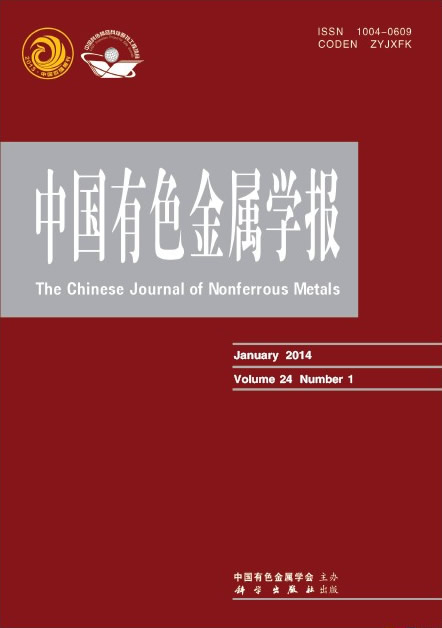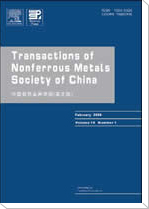(1. 中南林业科技大学 机电工程学院,长沙 410004;
2. 湖南大学 汽车车身先进设计与制造国家重点实验室,长沙 410082)
摘 要: 考虑到铸件凝固过程中因潜热释放造成的数值计算结果难于收敛问题,建立基于等效比热法的反热传导模型,并分析模型中各种计算参数如阻尼系数μ、未来时间步长R、正热传导计算时的时间步长Δθ及收敛误差值Tcr等对反算求解结果稳定性及准确性的影响,应用所建立的反热导模型,通过铸件内温度数据计算得到A356铝合金与铜冷却介质间的界面换热系数。结果表明,界面换热系数是随铸件凝固时间变化的,其变化范围在1 200~ 6 200 W/(m2?K)之间,而且变化过程中因为结晶潜热的释放存在两个峰值。
关键字: A356铝合金;凝固潜热;等效比热法;反热传导;界面换热系数
(1. College of Mechanical and Electrical Engineering,
Central South University of Forestry and Technology, Changsha 410004, China;
2. State Key Laboratory of Advanced Design and Manufacturing for Vehicle Body,
Hunan University, Changsha 410082, China)
Abstract:In order to calculate the interfacial heat transfer coefficient (IHTC) with the latent heat released during the solidification of the molten, a model of inverse heat conduction based on the equivalent specific heat method was established. The effects of some parameters in the model on the stability and the accuracy of calculation results were also discussed. The parameters include the damping factor μ, the future time step R, the time step Δθ in the forward heat conduction calculation and the value of the iteration Tcr. The heat transfer coefficient of A356 Al alloy on copper chill is obtained by using the inverse heat conduction method based on the measured temperatures in the casting. And it is found that the IHTC varies with time during the casting solidification. The values are in the range of approximately 1 200-6 200 W/(m2·K) and two peak values exist because of the released latent heat.
Key words: A356 Al alloy; latent heat released; equivalent specific heat method; inverse heat conduction; interfacial heat transfer coefficient


